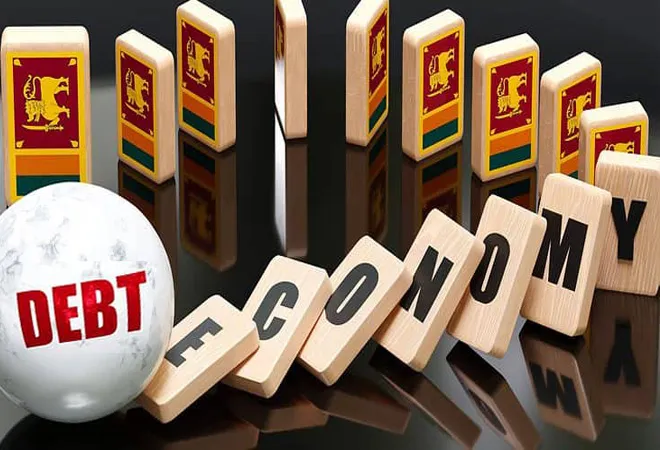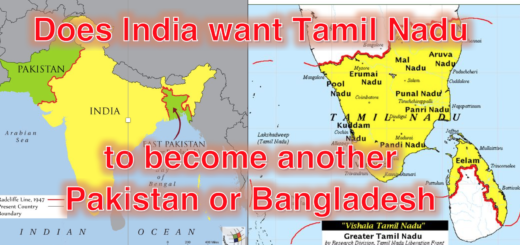Sri Lanka’s Economic Journey: From Stability to Collapse (2005–2025)

In 2 decades, Sri Lanka’s economy has passed through dramatic cycles – growth, stagnation, and collapse. Each government inherited both assets and liabilities from its predecessor, and the choices made during their rule determined whether the country moved towards prosperity or crisis. This timeline highlights what each leader received, the policies they pursued, and what they handed to the next government — exposing how Sri Lanka moved from relative stability under Mahinda Rajapaksa to complete bankruptcy by 2022, and how the current administration under AKD remains trapped under IMF dictates without a clear independent plan.
Timeline of Leadership and Economic Legacies
- Chandrika Kumaratunga → Mahinda Rajapaksa (2005)
Inherited from Chandrika in 2005:
SL Rupee: ~Rs. 78/USD
Debt: ~US$ 25B (~60% of GDP)
Economy: Moderate growth, inflation ~8%
Foreign Reserves: ~US$ 2.2B
Development: Limited; ongoing conflict in North-East
Loans passed: Concessional, mostly from bilateral & multilateral development Inherited (2005):
- President Mahinda Rajapakse rule (2005-2015)
Policies / Achievements (2005–2015):
- Infrastructure: Ports, highways, airports, power plants, rural development
- Economy: Growth ~7%, low inflation, stable macroeconomy
- Debt management: Borrowed primarily from concessional lenders; minimal ISBs
- Foreign reserves: Increased steadily (~US$ 8.2B by 2015)
Passed to next govt (Sirisena–Ranil, 2015):
- Stable economy, sustainable debt 70% GDP (~US$ 42B)
- Healthy foreign reserves
- Infrastructure assets that could generate future revenue
Key Point:
Mahinda passed on a stable, asset-rich economy with manageable debt and reserves
- Mahinda Rajapaksa → Sirisena–Ranil (2015)
Inherited from Mahinda Rajapakse:
- SL Rupee: ~Rs. 131–135/USD
- Debt: ~US$ 42B (70% of GDP)
- Economy: 7% growth, stable, low inflation
- Foreign Reserves: ~US$ 8.2B
- Development: Ports, highways, power, rural infrastructure intact
Policies / Actions under Sirisena-Ranil (2015–2019):
- Borrowing spree via International Sovereign Bonds (ISBs) & commercial lenders (7–9% interest, short-term)
- Focus shifted to financial engineering, not asset-generating infrastructure
- Little new infrastructure investment; stalled economic growth (~2.3% by 2019)
- Foreign reserves used to service ISB rollovers, weakening external position
- Introducedshort-term, high-interest ISBs (~US$ 12B during their term), which had to be rolled over every few years, making reserves highly vulnerable.”
- “Began heavy reliance onventure fund creditors and bond markets, shifting away from development-focused loans
Passed to next govt (Gotabaya, 2019):
- Debt: ~US$ 72B (82% of GDP)
- Foreign reserves: ~US$ 7.6B
- IMF dependence and rollover risk
- ISB-heavy debt trap created; economy vulnerable to shocks
Key Point:
- Ranil as PM created structural vulnerabilities via ISBs and commercial borrowing
- Seeds of 2022 collapse planted- This was the turning point where Sri Lanka moved from sustainable concessional borrowing to unsustainable commercial debt, sowing seeds of collapse.
- Sirisena–Ranil → Gotabaya Rajapaksa (2019)
Inherited from Sirisena-Ranil:
- SL Rupee: ~Rs. 182/USD
- Debt: ~US$ 72B, high ISB component
- Economy: Slowing, post-Easter 2019 instability
- Foreign reserves: ~US$ 7.6B
- Loans: Mostly high-cost ISBs with looming maturities
Policies / Actions of Gotabaya Rajapakse (2019–2022):
- No new ISBs issued; tried to service inherited debt
- Emergency lifelines: India (~US$ 4B), Bangladesh (~US$ 200M), China swaps
- Policy mistakes: Fertilizer ban → agriculture collapse;
- COVID-19 shock → tourism collapse, export losses, remittance slowdown made worse when JVP campaigned to prevent remittances in 2022 further collapsing economy for lack of foreign reserves
- March 2022: CBSL Governor Nandalal advised forced rupee free floatto IMF
- Result – Immediate rupee depreciation from ~Rs. 200 → ~Rs. 360–370/USD
- Effect: Doubled rupee cost of foreign debt (~US$ 72B → ~US$ 83B)
- Triggered inflation >50%, collapse of reserves, default
- Free float only served repayment of loan inflating payback amount!
- April 2022: Finance Minister Ali Sabry & CBSL Governor Nandalal declared default(pre-emptive decision by the 2; they bypassed both parliament & president)
Passed to next govt by Gotabaya (Ranil, July 2022):
- Debt: US$ 83B (US$ 37B defaulted)
- Foreign reserves: <US$ 20M usable
- Economy: Negative growth (-8%), extreme inflation
- Default already declared, IMF negotiations started
Key Point:
- Debt increase not due to new loans, but currency depreciation, interest accumulation on ISBs, and short-term credit lines
- Free float recommendation was politically & financially engineered to increase debt servicing obligations (a key factor many have ignored)
- Gotabaya only returned what Ranil-Sirisena governance handed over to him!
- Gotabaya Rajapaksa → Ranil Wickremesinghe (July 2022)
Inherited from Gotabaya:
- Debt: ~US$ 83B (US$ 37B defaulted)
- Economy: Recession, high inflation, negative growth
- Foreign reserves: <US$ 20M usable
- IMF program negotiations underway
- Social unrest, shortages: fuel, food, medicine
Policies / Actions by Ranil Wickremasinghe (2022–2024):
- Stabilized reserves artificially (~US$ 5B) via IMF loans, swaps, borrowed funds
- Continued IMF EFF: VAT & income tax hikes, SOE privatization, utility price reforms
- Central Bank “independence” Act (2023):
- CBSL funded by taxpayers
- Nandalal Weerasinghe now follows IMF instructions directly
- Government cannot control monetary policy, interest rates, or debt (Govt stripped of monetary control)
- Debt restructuring negotiations with ISBs & bilateral creditors ongoing
- Social costs: widespread Poverty & inequality worsened; middle class squeezed
Passed by Ranil Wickremasinghe to next govt (AKD, Sept 2024):
- Debt restructuring incomplete; IMF conditionalities enforced
- CBSL under independent Act; full IMF subordination
- Economy constrained by austerity, privatization, high taxes
- Social dissatisfaction, high living costs, compromised sovereignty
Key Point:
- Ranil, as PM in 2015–2019, created the ISB debt trap
- Ranil as “rescuer” in 2022–2024, executed IMF program, stabilizing reserves with more borrowing while punishing citizens
- Independent CBSL entrenched IMF control at taxpayer expense
- Ranil → AKD (Sept 2024 onwards)
AKD Inherited from Ranil Wickremasinghe:
- Debt: ~US$ 83B, partial restructuring, US$ 37B in default
- Economy: Slight recovery (1.5–2%), but IMF-dictated austerity
- Foreign reserves: ~US$ 5B (non-organic)
- CBSL: Independent, following IMF instructions
- Social unrest: middle-class burden, poverty, high taxes, ongoing fuel-food shortages
Policies / Actions by AKD (Sept 2024 – present):
- Early steps to renegotiate IMF terms, explore ~$17B additional debt relief
- Rollback minor austerity measures (subsidies, essentials prices)
- Anti-corruption measures initiated, investigations ongoing
- Maintaining IMF framework; no independent fiscal or monetary plan
- Public concern over foreign influence, sovereignty, and ongoing UNHRC pressures
Risks:
- Debt repayment scheduled from 2027 after grace period
- Without new income streams, extreme austerity, asset sales, or welfare cuts likely
- Potential second default risk if obligations cannot be met
- Critical infrastructure could be compromised due to foreign control or long leases
- AKD & Team has taken over governance without a proper plan or alternatives.
Key Point:
- AKD inherits structural constraints, IMF dependence, unresolved social discontent & is bound by them without an alternative plan
- Team AKD has no counter plan other than agreeing to IMF conditions.
- Economists: the problem is an income crisis, not just a debt crisis
Status of loans & debt
- Phase 1:2005–2015 (concessional, stable) – debt manageable
- Phase 2:2015–2019 (ISB/commercial addiction begins) – turning point, commercial debt dependence, vulnerability builds
- Phase 3:2020–present (default + IMF capture) – free float + default, IMF program with no exit strategy
Whose rule was better?
- Mahinda Rajapaksa (2005–2015):Sri Lanka prospered economically, politically with the end of 30 years of terrorism, and socially — infrastructure, growth, and stability.
- Sirisena–Ranil (2015–2019):Shifted to ISBs and financial speculation; slowed growth, created debt trap.
- Gotabaya (2019–2022):Faced shocks (COVID, Easter, remittance loss) + disastrous policy choices + IMF-backed free float → collapse and default.
- Ranil (2022–2024):Claimed “rescuer” role, but enforced IMF austerity, burdening citizens while protecting creditors; made CBSL an IMF-controlled entity.
- AKD (2024–present):Inherits IMF program & happy to continue Ranil-IMF economic model, no independent economic model — Sri Lanka remains trapped.
Bottom Line:
- “The crucial turning point was2015–2019 Sirisena–Ranil era, when ISBs and commercial debt dependency began.
- TheSabry–Nandalal free float + default locked Sri Lanka into IMF control.
- Ranil deepened IMF dominance facilitating the groundwork between 2015-2019, then passing headache & thereafter returning as rescuer and handing mantle to AKD and current scenario looks another return.
Sri Lanka prospered most under Mahinda Rajapaksa (2005–2015) when debt was sustainable, reserves were healthy, growth was strong, and assets were created. These ground realities must be accepted & acknowledged without political biases.
The ISB addiction under Sirisena–Ranil, compounded by Sabry–Nandalal’s IMF-backed default & free float, pushed Sri Lanka into economic, social & political collapse.
Today, IMF dictates to Sri Lanka’s Govt, CBSL, and lack of income generation keep Sri Lanka in a cycle of dependency with eroding sovereignty that is being bartered by the political system to maintain their power & privileges.
Sri Lanka’s debt history is a tale of three very different eras.
- Under Mahinda Rajapaksa (2005–2015), borrowing remained concessional and development-focused, ensuring repayment capacity and growth.
- The real rupture came with Ranil Wickremesinghe’s shift (2015–2019)to short-term, high-interest commercial bonds — a reckless departure from stability that laid the foundations of default.
- Gotabaya Rajapaksa (2020–2022)inherited this fragile structure, and when global shocks struck, collapse was unavoidable. Ranil’s return in 2022 only deepened IMF dependence, and today AKD has chosen to stay on the same path, continuing policies that lock the country in.
Thus, the evidence is unambiguous:
- Mahinda Rajapaksais wrongly accused of causing the crisis — his borrowings were sustainable.
- Gotabaya Rajapaksais unfairly blamed for default — he inherited a poisoned debt profile.
- Ranil Wickremesinghewas the architect in both phases — first by creating the ISB addiction, then by anchoring Sri Lanka to IMF dictates.
- AKDis now the custodian of this legacy, not a reformer but a continuator of Ranil’s path.
In short: Sri Lanka was not bankrupted by Mahinda or Gotabaya — it was trapped by Ranil, and today AKD has committed to maintaining that trap.
Shenali D Waduge







